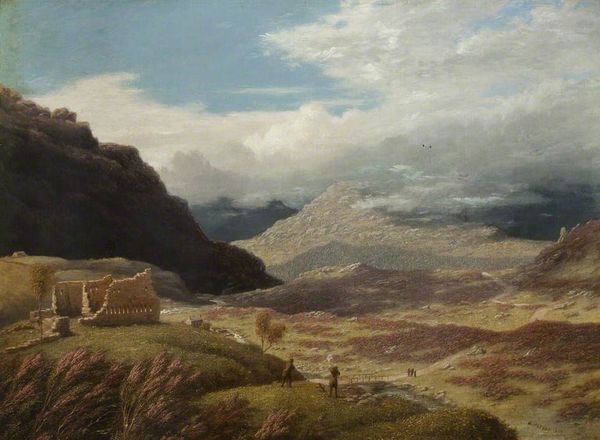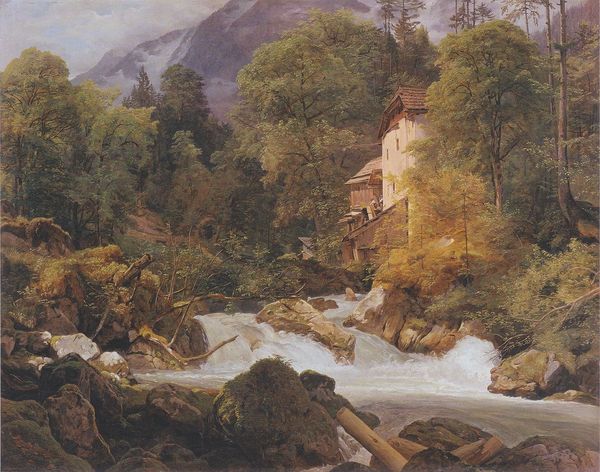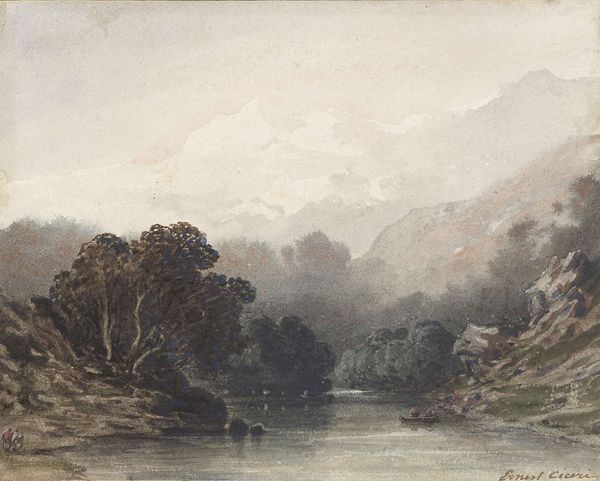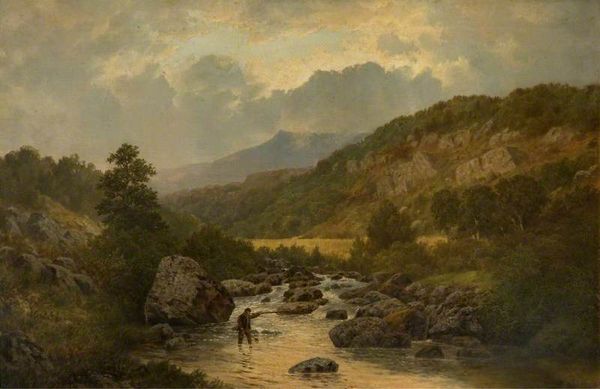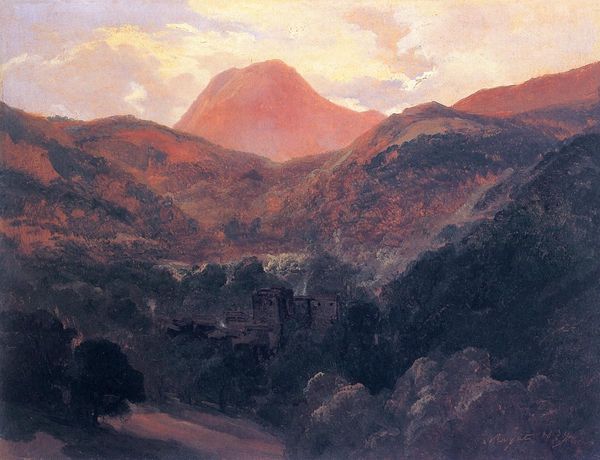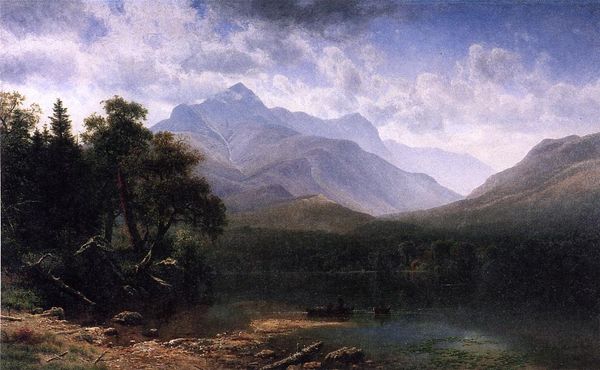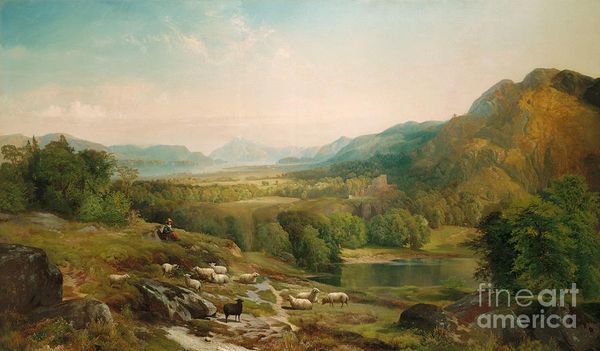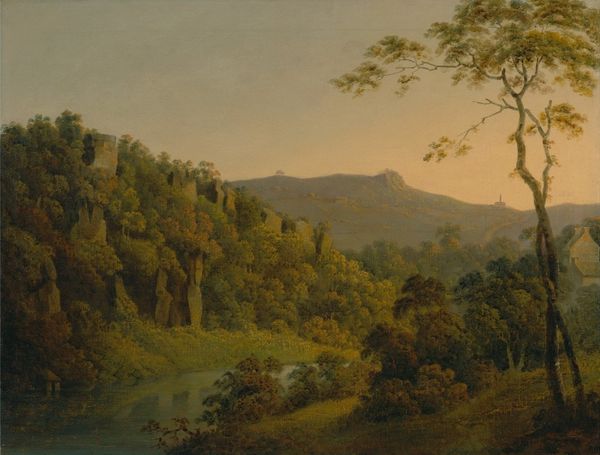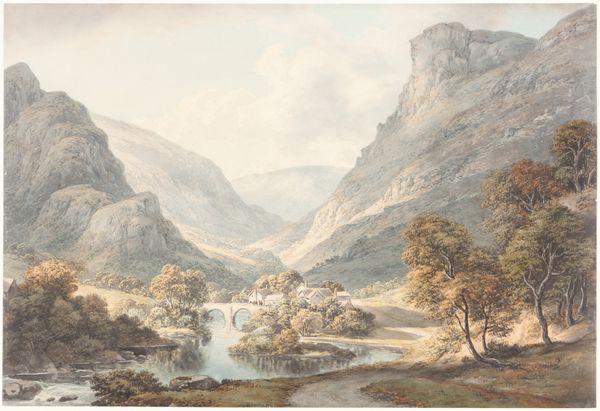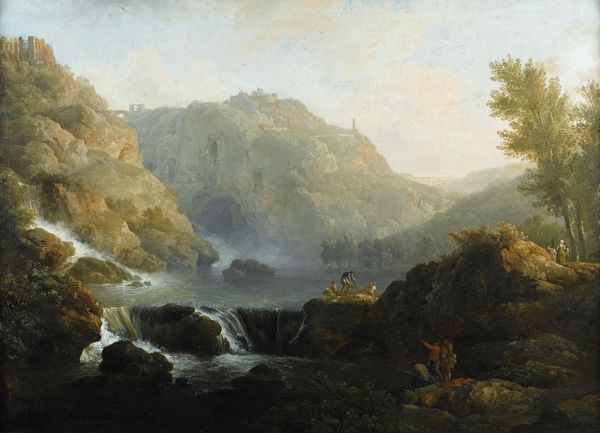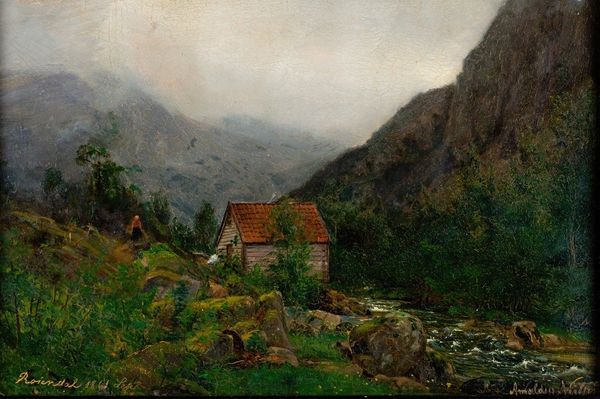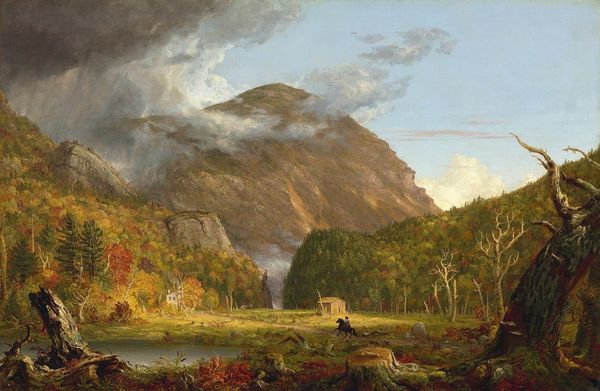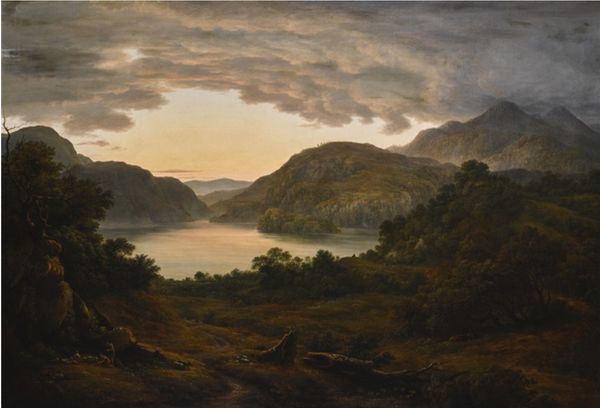
oil-paint
#
oil-paint
#
landscape
#
oil painting
#
romanticism
#
genre-painting
#
realism
Copyright: Public domain
Curator: Here we have "Mountain Landscape with Mill" by Andreas Achenbach, an oil painting that really captures a certain… moodiness. Editor: It certainly does. The first word that comes to mind is “brooding.” It’s a very evocative scene, heavy with shadow and implied drama. That sky really sets the tone. Curator: Absolutely. The composition places the mill off-center, almost nestled protectively beneath the looming mountains. It seems Achenbach is less interested in objective reality and more interested in creating an atmospheric experience. He's deeply rooted in the Romantic tradition, which heavily influenced landscape painting. This would have appealed to the growing middle class and their aspirations of grandeur in nature. Editor: Yes, and you see how the mill, despite being relatively small, is placed strategically to suggest industry in balance, or perhaps in contrast with, the imposing natural world around it? The rushing water is dynamic. It almost speaks to human endeavors trying to coexist with untamed nature. Note the color of the mill itself too, pale in contrast to the darkness of the wooded hill. Curator: Achenbach was very successful in his day, wasn't he? His paintings were quite popular in Düsseldorf, a place rapidly industrializing. Paintings like this arguably helped provide a sense of nostalgic escape or at least offered a controlled image of untamed wilderness. It also served a growing sense of nationalism and German Romanticism at the time. Editor: The mill’s wheel is certainly an ancient symbol. From a mythological point of view, the grinding of the mill could represent, alchemically, the reduction of elements to create something new – a common archetypal trope for human endeavors. The figures on the pathway almost seem drawn towards the activity that the mill represents. Curator: The painting also highlights an interesting tension within Romanticism itself: the idealization of nature versus the human mark upon it. It would be fascinating to know the specific local this piece may depict—or if it's more of an imagined space crafted to reflect the sentimentality of its era. Editor: Definitely, and despite the technical skill in rendering the scene, the painting's power resides not so much in the realism of the detail, but the subjective interpretation that its motifs prompt: human endeavor, connection, balance, journey. It evokes quite a bit from so few compositional components. Curator: A compelling synthesis. Andreas Achenbach created far more than just a visual record, leaving for posterity an atmospheric snapshot of humanity’s place amidst an evolving and evocative natural environment. Editor: Agreed. It's a good reminder that an image's staying power relies greatly on our ability to decode these layers of association, linking the scene back to us and our continuing relationship to nature.
Comments
No comments
Be the first to comment and join the conversation on the ultimate creative platform.
